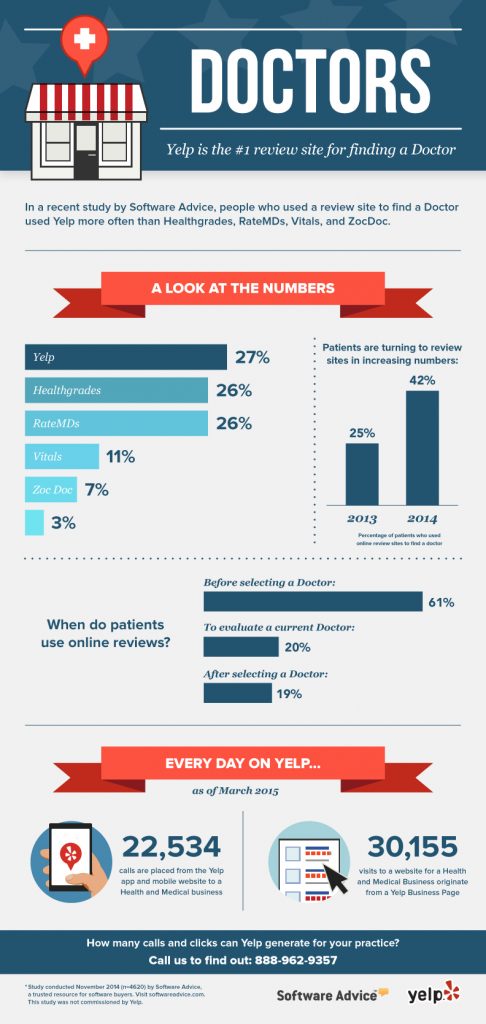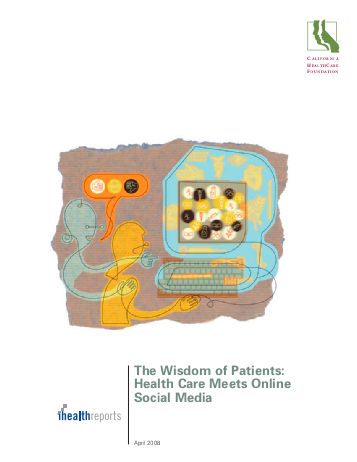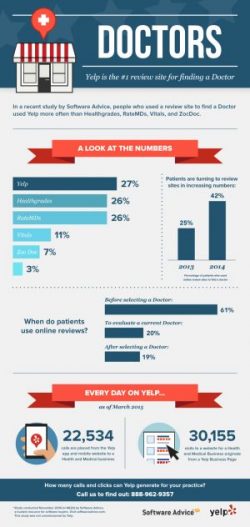 Just as consumers use TripAdvisor, Zagat, OpenTable, and their Facebook pages to review restaurants, hotels, automobiles, and financial services companies, many patients – now health consumers in earnest – have taken to reviewing healthcare services in social networks.
Just as consumers use TripAdvisor, Zagat, OpenTable, and their Facebook pages to review restaurants, hotels, automobiles, and financial services companies, many patients – now health consumers in earnest – have taken to reviewing healthcare services in social networks.
Finding reliable, understandable information about healthcare quality and prices is very challenging for most consumers. Are healthcare reviews on social networks statistically valid? An analysis of consumer ratings for New York State hospitals on Yelp, the social network, were positively correlated to objective scores of hospital quality, according to the research published in Yelp for Health: Using the Wisdom of Crowds to Find High-Quality Hospitals, from the Manhattan Institute.
The Institute used Yelp as the data source due to its size, with over 140 million unique monthly visitors. Yelp allows patients to review hospitals, nursing homes, and dialysis clinics based on a five-star rating system as well as open-text narrative. Yelp collaborated with ProPublica in 2015 to publish government-collected data on wait times, readmission rates, and commuication quality from 4,600 hospitals, 15,000 nursing homes, and 6,300 dialysis clinics. In several previous studies, Yelp scores were statistically correlated to higher HCAHPS scores. (The HCAHPS survey is the Hospital Consumer Assessment of Healthcare Providers and Systems, which patients complete upon being discharged from hospital to rate their personal experience as an inpatient).
Yelp scores are “good composite measures,” the researchers conclude; while other metrics could explain more details about the “why” in variation of hospital quality, Yelp ratings are understandable to most people.
Yelp or any other social network alone can’t be the “only guide” to hospital quality, but the authors assert that for “shoppable services,” social network reviews can help patients choose between services for which they have time to consider.
According to the Health Care Cost Institute, over 40% of all healthcare spending by consumers covered by employer-sponsored insurance is shoppable. HCCI defines shoppable healthcare as commonly available services that can be researched (“shopped”) in advance; with multiple providers of that service available in a market (supporting competition); and, with available data about the prices and quality of services available (that is, transparency).
Manhattan Institute makes three recommendations based on these findings:
- Help make Yelp scores more visible to consumers for health care shopping, for insurance and services (e.g., to enable better choice-making on health insurance exchanges)
- Link objective, simple quality metrics onto the Yelp review page for hospitals to enable patients with specific concerns.
- Fund hackathons that create ways to make Yelp and other social media review sites more accessible to safety-net populations and caregivers.
 Health Populi’s Hot Points: I wrote The Wisdom of Patients in 2008, when the patient social networks PatientsLikeMe, Stupid Cancer, and WEGO Health were nascent. Today, these patient communities support peer-to-peer healthcare, support clinical research through crowdsourcing patients, and empower patients and caregivers in self-care and shared-decision making with healthcare providers. In 2008 when this paper was published, high-deductible health plans weren’t in vogue.
Health Populi’s Hot Points: I wrote The Wisdom of Patients in 2008, when the patient social networks PatientsLikeMe, Stupid Cancer, and WEGO Health were nascent. Today, these patient communities support peer-to-peer healthcare, support clinical research through crowdsourcing patients, and empower patients and caregivers in self-care and shared-decision making with healthcare providers. In 2008 when this paper was published, high-deductible health plans weren’t in vogue.
Today, shopping for healthcare is a necessary task for people enrolled in high-deductible health plans (CDHPs). These patients are responsible for first-dollar coverage until a plan deductible is met, and so perceive that health spending is coming from their own pockets. No longer is the $20 or $40 copay a nagging out-of-pocket expense; a $1,500 bill for an MRI is what a CDHP enrollee could face when looking for a back pain diagnosis.
The larger the social network, the more statistically valid the Wisdom of Patients becomes. In the current fragmented, labyrinthine, and high-cost healthcare environment that patients in the U.S. face, social networks play a crucial role enabling people to be more effective consumers and more engaged patients.





 Interviewed live on BNN Bloomberg (Canada) on the market for GLP-1 drugs for weight loss and their impact on both the health care system and consumer goods and services -- notably, food, nutrition, retail health, gyms, and other sectors.
Interviewed live on BNN Bloomberg (Canada) on the market for GLP-1 drugs for weight loss and their impact on both the health care system and consumer goods and services -- notably, food, nutrition, retail health, gyms, and other sectors. Thank you, Feedspot, for
Thank you, Feedspot, for  As you may know, I have been splitting work- and living-time between the U.S. and the E.U., most recently living in and working from Brussels. In the month of September 2024, I'll be splitting time between London and other parts of the U.K., and Italy where I'll be working with clients on consumer health, self-care and home care focused on food-as-medicine, digital health, business and scenario planning for the future...
As you may know, I have been splitting work- and living-time between the U.S. and the E.U., most recently living in and working from Brussels. In the month of September 2024, I'll be splitting time between London and other parts of the U.K., and Italy where I'll be working with clients on consumer health, self-care and home care focused on food-as-medicine, digital health, business and scenario planning for the future...